deepeye.hu
Astronomical Drawings of Peter Kiss
Astronomical Drawings of Peter Kiss




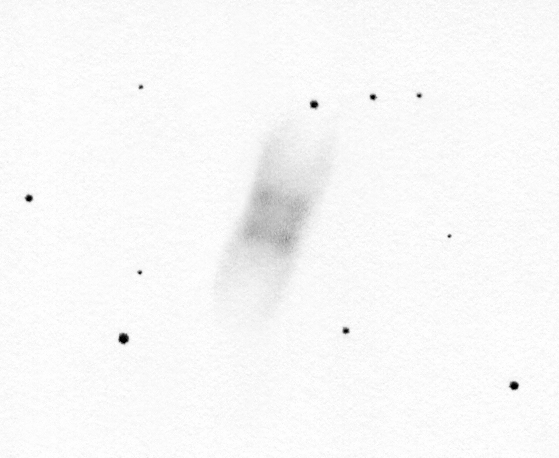

Seeing the beautiful Hubble photo (see below) it was no question that I had to take a look at IC 4406 as soon as I could. This opportunity came in the spring of 2016. IC 4406 is a planetary nebula in Lupus (the Wolf). This planetary has a bipolar shape with a very bright square inner part and much fainter outer protrusions. The sides of the inner "square" are slightly indented and a brighter spot sits in all four corners. The SE one (bottom right) is the brightest followed by the NW one (top left). There is a thin slightly brighter thread in the NW (top left) protrusion. The long edges show a lot of contrast but the open ends are very diffuse. I didn't note colors - either I didn't see colors in the nebula or I simply didn't pay attention. The visual appearance didn't really change with an [OIII] filter.
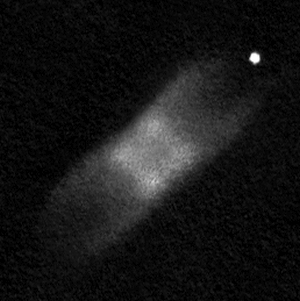

You can see the ESO (European Southern Observatory) image of IC 4406 made using the MUSE instrument mounted on the 8.2m VLT (Very Large Telescope) telescope. The AOF (Adaptive Optics Facility) was in use on the telescope during the measurement. This instrument analyzes the image of 4 artificial guide stars produced by lasers and distorts a mirror in real-time in order to compensate for the atmosphere's distorting effects.
The photograph is a composition of images made with 5 different narrowband filters. The filters are listed in the table below. This is basically a "false-color" image but besides telling a lot about the physical processes inside the nebula it cannot be that far from "reality". It is unliekly that anybody will see IC 4406 in such detail and color - this would probably require an immensely big telescope - therefore in my opinion it is very difficult to tell what would be the "real" colors.
| Filter | Light source | Wavelength (real color) | Color in processed image |
|---|---|---|---|
| OIII | doubly ionized oxygen | 500 nm (green) | blue/violet |
| OI | neutral oxygen | 630 nm (red) | light blue/cyan |
| H-alpha | ionized hydrogen | 656 nm (red) | green |
| NII | singly ionized nitrogen | 658 nm (red) | orange |
| SII | singly ionized sulphur | 673 nm (red) | red |
You can see my drawing made with a 16" telescope next to the photo that was made using ablsolutely cutting edge technique.
The Hubble photo of IC 4406 can be seen below. This is the image that caught my attention and made me want to see this planetary nebula.

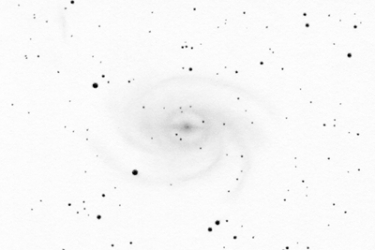
Pavo galaxy
The grand spiral galasy of Pavo
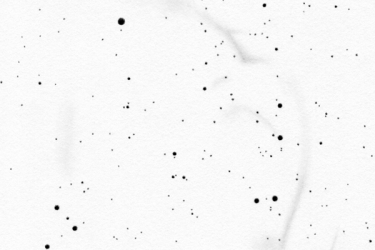
Panorama drawing
Huge and faint supernova remnant in the southern sky
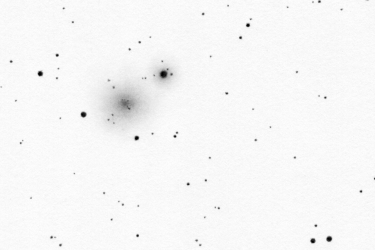
Centaurus globular cluster
The second globular in Centaurus

Apus globular cluster
Globular cluster close to the Southern celestial pole
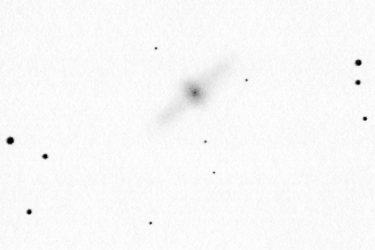
Centaurus galaxy
Polar ring galaxy
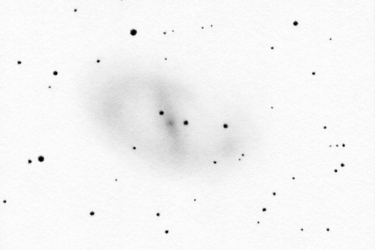
Ara galaxy
Barred spiral galaxy in the thick of the Milky Way